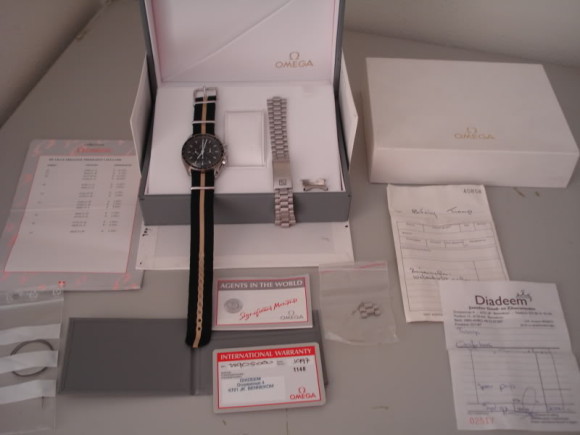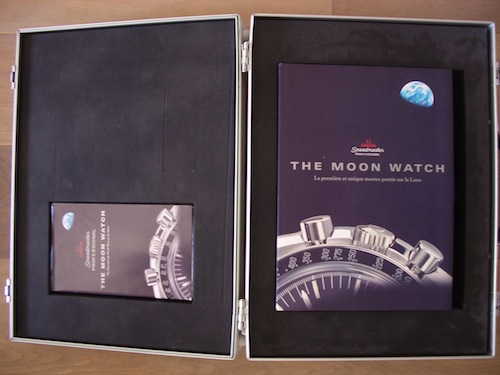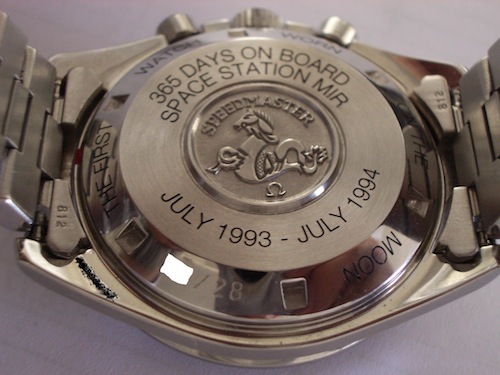The NASA tests: The story of how the OMEGA Speedmaster became the Moonwatch – the only wristwatch approved by NASA for all manned space flights – has been re-told often enough that it is sometimes difficult to determine where the history ends and where the myth begins.
April 6th 2009
The true story, without embellishment, is so remarkable that it’s worth a trip back to the 1960s to re-examine how the Speedmaster came to be considered in the first place, the nature of the strenuous tests to which it and four other chronographs were subjected and finally, how it was chosen over its competitors to accompany every manned space flight since the launch of the Gordon Cooper’s Faith 7 mission as part of the Mercury program on May 15th, 1963.
Chosen to compete
It all began in the early 1960s when two NASA officials anonymously visited several Houston jewellery stores, including Corrigan’s, which at the time was the city’s best-known watch and jewellery retailer.
The men from NASA bought a series of chronographs of different brands, charged with the task of finding the best watch available for their astronauts to wear in space.
The solo-flight Mercury space programme was almost completed (in fact, Wally Schirra had worn his own Speedmaster on his Mercury flight on the 3rd of October, 1962) and NASA was preparing for the Gemini (two-man) and Apollo (three-man) missions. There were plans for the astronauts on these missions to move about in space outside the ship. One of their key pieces of equipment would be a wristwatch which could withstand the difficult conditions of space.
Every time an astronaut suspended in the vacuum of space turned his wrist, the watch would suddenly come out of the shade and be exposed to the unfiltered rays of the sun and temperature increases of more than 100°C. On the moon, President Kennedy’s and NASA’s declared objective, things would be even tougher. Temperatures on the lunar surface fluctuate between -160° and +120°C.
A series of strenuous tests was devised to determine which watch was best suited to the extreme challenges of space.
NASA ordered two Speedmasters and two each of five other chronographs for “testing and evaluation purposes” on September 29, 1964 at a price of $82.50 each at the exchange rate of the day – they retailed for CHF 415 in Switzerland. NASA stipulated that it required the watches by October 21, 1964.
The Qualification Test Procedures
When NASA received the watches, they were subjected to a series of stringent tests and pre-selection processes called the “Qualification Test Procedures”. They can be summarized briefly:
A. The watches will be wound immediately prior to each testing phase.
B. The stopwatch (chronograph) feature should be operated during each test and during periods between tests. The stopwatch operation should be recycled immediately before and after each test and, when delays occur, at two- to six-hour intervals between tests.
C. Time accuracy checks should be made before and after each test, at one-hour intervals during testing (when possible) and at two- to six-hour intervals between tests, if testing delays occur. At the start of each time-check period the chronograph should be started and the following data recorded for the start time:
• Watch identification
• Master time (hours, minutes, seconds)
• Test watch time (hours, minutes, seconds)
When accuracy checks are made during a testing period, the chronograph time measurement should not be stopped, but the following should be recorded:
• Watch identification
• Master time (hours, minutes, seconds)
• Test watch time (hours, minutes, seconds)
• Elapsed stop-watch time (hours, minutes, seconds)
D. In conjunction with each time check, the watches should be inspected for damage to the case, crystal, dial, strap and buttons, and for the presence of moisture underneath the crystal. Any irregularities in the watch’s condition should be noted.
E. A watch should be withdrawn from further testing if the following failures occur:
• Complete watch operation failure with no restart capability
• Complete stopwatch operation failure with no re-start capability
• Two watch operation failures of any type even though re-start capability exists
• Cracked or broken crystal
• Broken winding stem or stopwatch controls.
And then there were three
Only three watches out of six chronographs successfully survived this arduous pre-selection phase. The finalists were then subjected to 11 different tests – the most rigorous trials endured in the history of horology.
The most rigorous trials
1. High temperature
48 hours at a temperature of 160°F (71°C) followed by 30 minutes at 200°F (93°C). This under a pressure of 5.5 psia (0.35 atm) and relative humidity not exceeding 15%.
2. Low temperature
Four hours at a temperature of 0°F (-18°C).
3. Temperature-Pressure
Chamber pressure maximum of 1.47 x 10-5 psia (10-6 atm) with temperature raised to 160°F (71°C). The temperature shall then be lowered to 0°F (-18°C) in 45 minutes and raised again to 160°F in 45 minutes. Fifteen more such cycles shall be completed.
4. Relative humidity
A total time of 240 hours at temperatures varying between 68°F and 160°F (20°C and 71°C) in a relative humidity of at least 95%. The steam used must have a pH value between 6.5 and 7.5.
5. Oxygen atmosphere
The test item shall be placed in an atmosphere of 100% oxygen at a pressure of 5.5 psia (0.35 atm) for 48 hours. Performance outside of specification, tolerance, visible burning, creation of toxic gases, obnoxious odours, or deterioration of seals or lubricants shall constitute failure to pass this test. The ambient temperature shall be maintained at 160°F (71°C).
6. Shock
Six shocks of 40 Gs, each 11 milliseconds in duration, in six different directions.
7. Acceleration
The equipment shall be accelerated linearly from 1 G to 7.25 Gs within 333 seconds, along an axis parallel to the longitudinal spacecraft axis.
8. Decompression
Ninety minutes in a vacuum of 1.47 x 10-5 (10-6 atm) at a temperature of 160°F (71°C) and 30 minutes at 200°F (93°C).
9. High pressure
The equipment to be subjected to a pressure of 23.5 psia (1.6 atm) for a minimum period of one hour.
10. Vibration
Three cycles of 30 minutes (lateral, horizontal, vertical), the frequency of varying from 5 to 2,000 cps and back to 5 cps in 15 minutes. Average acceleration per impulse must be at least 8.8 Gs.
11. Acoustic noise
130 db over a frequency range of 40 to 10,000 Hz, duration 30 minutes.
The results
On March 1, 1965, the test results were complete. Three brands’ chronographs had still been in the running. Of those, one brand’s entry had stumbled on two separate occasions in the relative humidity test. In the course of the heat-resistance test it finally came to rest for good. The large seconds hand warped and was binding against the other hands.
The crystal of the second brand’s chronograph had warped and come away from the case during the heat test. The same unfortunate occurrence took place with a second model of the same make during the decompression test.
Only the OMEGA Speedmaster passed. At the time, NASA’s testers wrote, “Operational and environmental tests of the three selected chronographs have been completed; and, as a result of the test, OMEGA chronographs have been calibrated and issued to three members of the GT-3 (Gemini Titan III) crews.”
What sounds like a reserved, sober announcement was, in fact, the official decree that from that time forward, the OMEGA Speedmaster would be the only watch approved for all manned space flights and would be become an inextricable part of the OMEGA legacy. As significant was a NASA communiqué dated March 1st, 1965 which said, “. . . the astronauts show a unanimous preference for the Omega chronograph over the other two brands because of better accuracy, reliability, readability and ease of operation.”
An ironic postscript: OMEGA only learned about the Speedmaster’s journey into space after seeing a photograph of Ed White taken during America’s first spacewalk as part of the Gemini 4 mission in June of 1965.
Source: NASA documentation and correspondence, 1961 — 1965.






